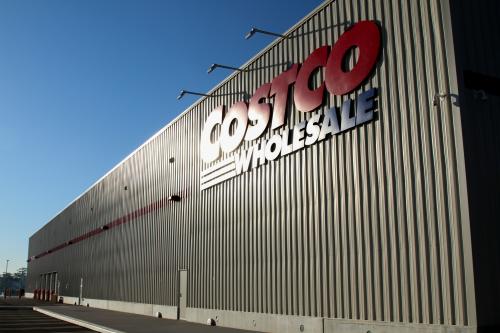• Direct confrontation on the rise as investors demand greater control
• European investors far more successful at enforcing change
• Regulatory and filing regimes are changing across the continent
• Consultative approach garners better results than proxy fights
• US investors seeking better communication adopt European model
What’s going on in gentlemanly old Europe, where investor activism was once considered as strange and indecorous as riding a wild bronco? Formerly a bastion of family ownership and boards comprised entirely of insiders who answered to no one, Europe’s corporate landscape is changing.
The legal framework has transformed considerably and now includes new rules governing executive compensation, related-party transactions, director independence and voting rights. Institutional investors, hedge funds and other shareholder representatives are speaking up as never before, pushing companies to change business models, overhaul strategies and reform their governance structures.
‘We see more activism in Europe than ever before,’ says Jean-Nicolas Caprasse, managing director of ISS Europe, a unit of US-based Institutional Shareholder Services. ‘European shareholders are becoming more engaged on a wide range of issues, including strategic positioning, and they are prepared to become more vocal if that is in their interest.’
In Germany, for example, shareholder rights association DSW filed more than 40 counter-motions during the 2006 proxy season, mainly to force companies to comply with new executive pay disclosure rules. ‘We expect the increase in shareholder activism to continue in the next proxy season,’ says DSW managing director Jella Benner-Hainacher. She adds that several companies yielded to the pressure and agreed to disclose executive pay.
Good communication = better relationships
While European shareholders may be getting their act together, they are taking it on the road in their own unique way. In the US, the typical expression of shareholder activism is a resolution introduced at a general meeting or an all-out proxy fight. In Europe, the attempt to force management’s hand tends to be a more understated affair, taking place behind closed doors.
‘Dialogue between shareholders and companies in the UK is well-ordered, responsible and often kept low-profile,’ says Michael McKersie, manager of investment affairs for the Association of British Insurers. ‘In the US, you see relatively little shareholder engagement with companies; they go through the SEC or wage proxy fights, and it is a confrontational exercise. We don’t think it is necessarily going to help the company to have shareholders speaking negatively about it in public.’
The system works much the same way in Germany, says Benner-Hainacher. ‘Investors such as hedge funds or pension funds first approach the management, then the supervisory board,’ she says. ‘In the end, they may appear at the annual general meeting to criticize the company’s strategy.’
This behind-the-scenes approach usually gets results. A study by the European Corporate Governance Institute (ECGI) of the outcome of investor initiatives led by fund management giant Hermes shows that when investors decided to try to remove the chairman or CEO of a company, they succeeded in about 80 percent of cases.
The ability to remove the chairman and/or CEO provides investors with powerful leverage over corporate strategy. One example was the ouster last year of the chief executive and supervisory board chairman of Deutsche Boerse, under pressure from shareholders led by hedge fund TCI. The shareholder group opposes the German stock exchange’s plan to buy the London Stock Exchange.
‘The chairman and CEO resigned just before being ousted,’ Caprasse notes. ‘The management of Deutsche Boerse really underestimated the power of the shareholders and would not discuss the issue. As a result, they really had to leave.’
Walk softly, carry a big stick
Shareholders in European companies can afford to speak more softly than their US counterparts, largely because they carry a big stick in the form of the right to call extraordinary general meetings (EGMs) and vote directly for or against individual directors. Shareholders in US companies, in contrast, are essentially captives of the slate proposed on the management proxy.
While US shareholders technically can propose their own board members, it is a costly and cumbersome exercise. In Britain, a group of shareholders representing 10 percent of a company’s paid-up capital has the right to call an EGM, and if a majority of those present at such a meeting favor a motion – such as the ouster of the chairman or CEO – then the motion passes.
Calling an EGM is ‘an inalienable right of shareholders’ in the UK, says Marco Becht, executive director of the ECGI and a professor at Brussels Free University. He adds that if shareholders at an EGM approve a proposal to remove individual directors or the whole board, then ‘that person has got to go.’
In the US, Becht observes, ‘there is no middle ground. If you as a shareholder write a letter to the company, you are often ignored. So if you want to make a difference, you have to go to extreme measures. A shareholder might say, I have an 8 percent stake, and if you don’t make changes, then I’ll buy you out. The company might respond with a threat to adopt a poison pill or it might have a staggered board in place. So the issue goes to a proxy fight, and the company takes the poison pill. Suddenly another gigantic fight has erupted, and they are talking about proxy fights and maybe even a hostile takeover.’
The 20 percent solution
Armed with their direct voting powers (which vary from country to country), European institutional investors are building coalitions among themselves to persuade senior managements and directors that resistance to their agenda would be futile.
‘The major long-term owners of companies will talk to each other about what is in their interest,’ says Colin Melvin, director of corporate governance at Hermes Pensions Management in London. He adds, however, that Hermes’ engagement with companies is successful ‘not because we build coalitions with other shareholders, but because we gain the trust of companies and work toward helping them achieve a sound financial basis.’
In any event, coalition building by institutional investors in European companies is on the rise, particularly as more and more foreign investors, accustomed to more confrontational methods, enter the scene.
A factor that complicates this coalition building is the European Union’s Takeover Directive, which requires shareholders with a collective holding of 30 percent or more of a company’s voting rights to offer to buy out the other shareholders. The purpose of the directive is to ‘protect smaller shareholders against a creeping takeover,’ says Becht.
But this problem is dealt with fairly easily by keeping below the 30 percent threshold, institutional investors say. ‘We typically see coalitions representing between 10 and 20 percent of the vote,’ says Caprasse. Besides, he adds, the agreements are seldom formalized in writing, so that they cannot technically be called voting blocs. ‘If they don’t sign an agreement,’ he notes, ‘that means they are free to vote any way they like.’
If shareholders in European companies have so much more power than their American counterparts to exercise direct control over boards and senior managements, why have they only recently started to exercise it?
One reason is that minority shareholders have traditionally been overshadowed by dominant owners (often families that own controlling shares of mid-sized companies). According to Becht, 50 percent of European companies have a dominant group of shareholders, compared to 20 percent of US firms. This has kept minority shareholders’ influence over strategy to a minimum.
However, this is starting to change. ‘Ten years ago, nearly all companies in France, Belgium and the Netherlands were controlled by dominant shareholders,’ notes Pierre Nothomb, a partner in Deminor, an advocacy firm representing minority shareholders. ‘Today, shareholding within European companies tends to be more dispersed, and that gives rise to more concerns about shareholder rights.’
‘Smell the napalm’
Activist institutional investors from the US, particularly hedge funds, have brought their methods across the Atlantic, influencing their European counterparts to jump into the fray.
One well-known figure in European investor circles is Guy Wyser-Pratte, a former US marine who led a rebellion at German engineering company IWKA. His campaign led to the resignation of chief executive Hans Fahr in 2005. Wyser-Pratte, who was born in France but raised in the US, once famously advised entrenched managers of European companies to ‘wake up and smell the napalm.’
European institutional investors tend to use a more genteel vocabulary. They prefer ‘engagement’ to ‘activism’ and talk about dialogue rather than proxy fights. But the gloves do come off from time to time, occasionally with a strong nudge from overseas investors.
For example, Mellon HBV Alternative Strategies, a subsidiary of Mellon Financial, has been lobbying for the breakup of Dutch semiconductor equipment company ASM International. It proved its clout this autumn when it introduced a motion to split the company into separate parts. Under rising pressure from shareholders, the company agreed to submit the issue to a shareholder vote in late November.
In general, the globalization of financial markets is creating a degree of convergence in investor methods, notes Matteo Tonello, senior research associate for global corporate governance for the Conference Board.
‘Activists go where the money goes,’ he says. ‘If institutional investment grows in certain areas of the world, activism follows. As a result of globalization of financial markets, corporations in Europe are more receptive to the idea that they have to be bottom-line oriented.’
Tonello adds that the hedge fund industry, in particular, is behind the activist drive. Combined hedge fund assets under management have more than doubled since 2001 worldwide and have now reached $1 trillion. ‘There is a lot of pressure on hedge funds to perform, and they are going for an activist strategy for this reason.’
Another reason for the awakening of investors in European companies is a growing body of knowledge on the bottom-line impact of corporate governance practices as well as a growing awareness that there is room for improvement.
Deminor, which operates a fund that invests in firms that are undervalued because of perceived poor governance practices, ‘still finds many companies in Europe that are undervalued because the shareholders have too little control,’ says Nothomb. In the UK, he adds, ‘it is harder to find companies whose shares sell at a 30 or 40 percent discount due to bad governance or serious deficiencies in the shareholder structure, yet we can find such companies in Italy and Germany, for example.’
Finally, activist investors are learning from each other and becoming emboldened by one another’s successes. The rejection by Fortis shareholders of a poison-pill measure proposed by management is one example.
‘This would have been inconceivable only a few years ago,’ says Caprasse. ‘This kind of action is a result of an increasing number of institutional investors taking an active stance toward exercising voting rights.’
Exporting European ideals?
While investors in European companies are adopting some features of the US system, the influence is moving in the opposite direction as well. ‘In the US, you see situations of engagement rather than confrontation, just as in Europe we see more and more US-style activism led by institutional investors,’ says Tonello. ‘There are shades of grey on both sides. It is difficult to generalize.’
In particular, institutional investors in US companies are hoping the rules that buttress investor clout in Europe are introduced in the US. Shareholder advocates are asking the SEC to require companies to include shareholder-nominated directors on managements’ proxy statements.
Jack Ehnes, CEO of the California State Teachers’ Retirement System and chairman of the Council of Institutional Investors, which represents 130 pension plans with more than $3 trillion in assets, has been quoted as saying that this would make boards ‘more thoughtful about whom they nominate to serve as directors and more vigilant about their oversight responsibilities.’
Unless investors in US companies acquire such direct power to shape boards, their power to introduce resolutions at shareholder meetings will remain fairly meaningless, European experts say.
‘There are a lot of shareholder proposals filed in the US and that’s all very nice,’ says Becht. ‘But when you look more closely, all this activity is just smoke, because these proposals don’t change anything. So is that activism, or is it just barking up to the moon?’
Whatever the rules eventually say, however, investors may find that, for cultural reasons, European companies are generally better listeners.
‘Culturally in Europe, the corporation is seen as a nexus of interests, a place where a variety of stakeholder interests come together – not only owners but also board members, management, employees and stakeholders,’ says Tonello. ‘As a result, European companies have shown a greater openness to the idea of engagement.’








